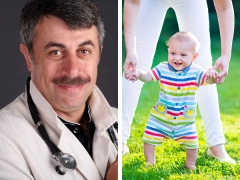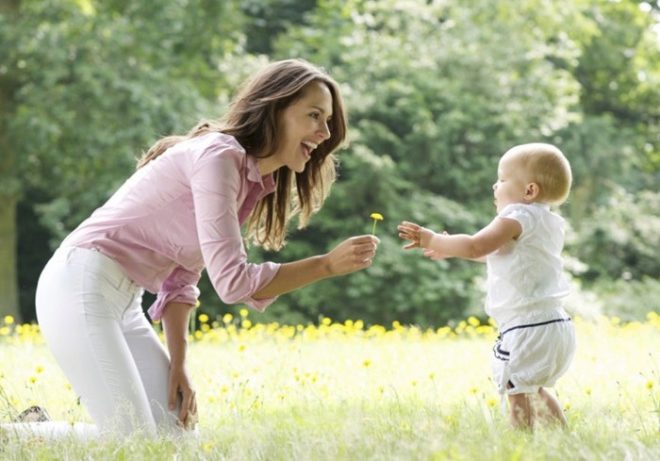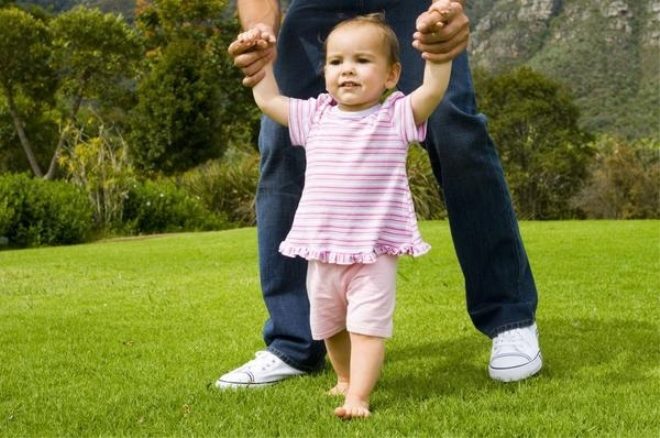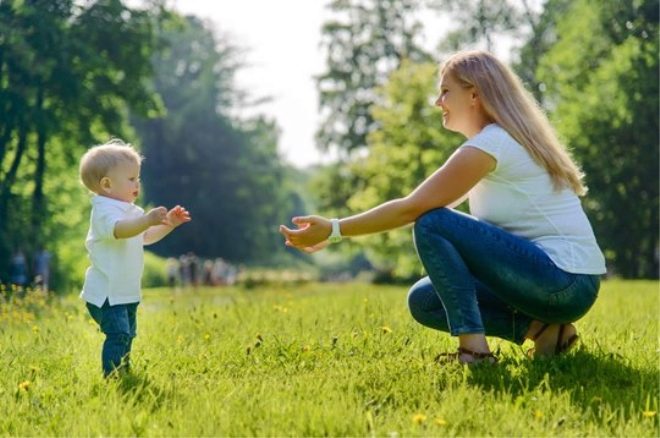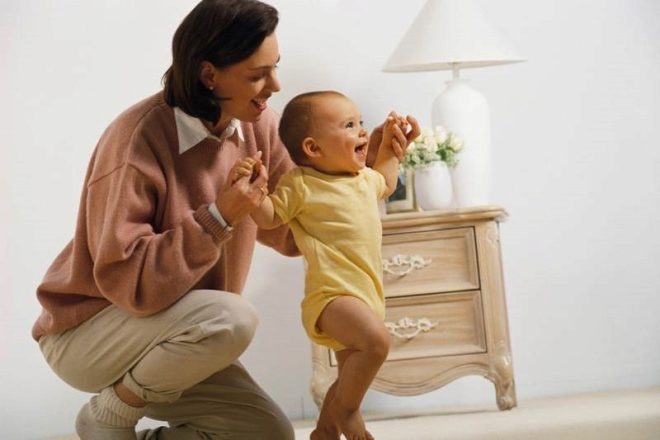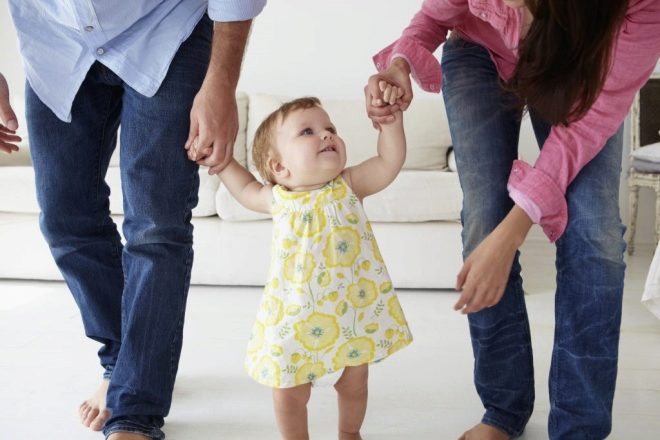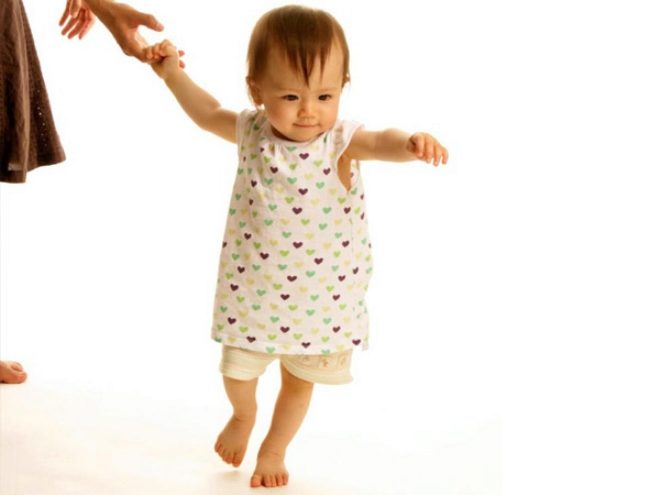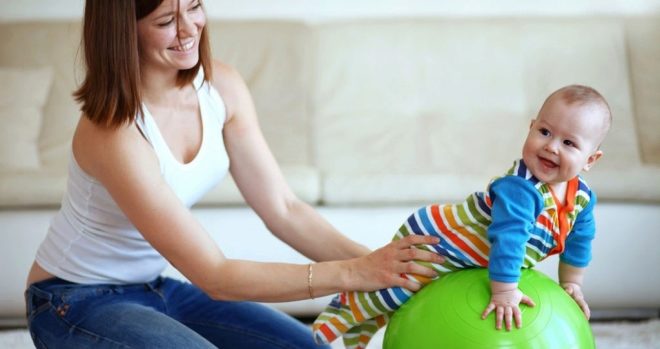Dr. Komarovsky on how to teach a child to walk on their own
Parents, without exception, tend to be proud of the achievements of their children. The first tooth came out, the child himself sat down, crawled, independently reached for the toy, made the first step - all these are reasons for incredible pride.
For some reason, moms and dads think that the sooner their child gets on two legs and starts walking on his own, the better. And those whose little tots do not want to sit, crawl and walk, tend not only to panic, fearing for the health of the beloved offspring, but also to blame themselves for their child develops slower than others. Famous children's doctor Yevgeny Komarovsky tells whether it is possible to teach a child to walk independently and whether it is necessary to do it.
About norms and deviations from them
In pediatrics, there are certain norms of physical development baby Usually the average baby begins to stand with support at 7-9 months. He starts doing without support (or even takes the first steps) to 10-12 months. If a child does not walk in 1 year and 2 months, this is not necessarily a sign of a serious illness. Such a baby does not need to be treated immediately.
If the pediatrician reasonably considers the child healthy, it does not matter at all when the baby starts to walk - at 6, 8 months, at 10 or at 18. In the notorious statistics, of course, the timing of the start of upright walking is also negotiated - from 10 to 15 months. However, in practice they can be very different from these values, since all children are very individual. Komarovsky advises not to compare his child with other children and with the average statistical norms. This is a thankless task, it leads to the development of neuroses in the child and his parents.
Why doesn't the baby walk?
The possibility of the development of walking is influenced by a huge number of factors:
- the weight and body of the baby;
- muscle and spinal readiness;
- his state of health (whether chronic and acute diseases);
- child's temperament, character traits;
- heredity;
- the desire of the child to walk.
Komarovsky considers the key factor is the baby’s desire to move vertically. Nature arranged everything in such a way that the desire to walk appears precisely when there are optimum physical possibilities for its realization.
If the child has successfully passed all previous stages (coups, sitting, crawling), he is quite ready to stand and walk. However, no need to rush it. Children whose parents are forced to take an upright position are at great risk. The load on the spine (especially if the baby is plump and weighs more than the norm) can cause further problems with this very spine.
If the baby is somatically healthy, and the pediatrician who observes him, declares that the child does not have any diseases, then Komarovsky advises that he does not specifically teach the child to walk for up to a year. Nothing terrible, according to Evgeny Olegovich, will not happen if the toddler spends a couple of extra months in a horizontal position.
About walkers
Many parents believe that the walker will help solve the problem of “not walking”. They buy this (not the cheapest) device and calm down - everything that depended on them was done. Dr. Yevgeny Komarovsky says that the main benefit of the walker is the benefit for the parents.Walkers are a great way to take a child and free their own hands. While the child is on a walker, the mother can be calm - the child will not fall anywhere, will not hit a sharp corner, will not be crippled. If we are talking about a little time, which is required for the mother to cook dinner or take a shower, then there is nothing terrible in the walker.
The terrible thing begins when the parents with the help of these same walkers are trying hard to teach the child to walk and keep the baby in this device all the time while he is awake.
The earlier mom and dad start using walkers, the stronger and more dangerous is the vertical load on the spine of the child.
Before standing, the baby must pass the crawling stage, as in the process of moving on crusty, on all fours, on cams, even backwards, the muscles of the back, legs and arms are trained and strengthened in the child, which then allows him to start walking with a minimum load on the spine.
Walkers can cause acquired leg curvature. The fact is that the child in the walker is repelled from the surface by the outer side of the foot. If this method of movement is practiced frequently, an irregular walk is formed. Crooked legs for a boy may not be such a big problem, but she doesn’t paint a girl.
It's no secret that a walker is a common gift for a family with a small child. Considering all the above, Dr. Komarovsky recommends that donors replace the walker at the playpen. This device will help the child to have a good time, not to fall down and not to be cured, not to climb somewhere, and mother will give him precious free time for cooking, ironing and putting herself in order.
For details, see the short video of Dr. Komarovsky.
How to teach to walk?
Komarovsky says the best way to teach a child to walk is to pre-teach him crawl and in every way to encourage such a horizontal (and therefore relatively safe) way of movement in space.
Sometimes it happens that a child is afraid to start walking. Physically, he is ready (and even tried) to walk on his own, but he fell down, was badly hurt, something scared him, and after that the crumb does not want to take any steps. In this situation, parents should gently and unobtrusively help their child - but not learn to walk, but overcome fear.
It is right to teach a child to walk - to teach him when he himself is ready for this, but for some reason cannot overcome fear. Parents, especially with little parental experience, are quite difficult to understand when the baby is ready to move on two limbs. There are several sure signs that physiological readiness exists:
- The child can stand on legs for a long time, holding on to the side of the playpen, behind the railing of the crib.
- The child has learned to cross, holding on to the sides or railings.
- The child has learned not only to stand, but also to assume a sitting position from a standing position (this indicates a developed musculature of the back).
- The child is already walking, but does it in his own way - he walks on his knees, trying to move on his fingers.
Winning fear is not as easy as it seems, long and hard work is required from mom and dad. It is best to engage with the child in a playful way, encouraging him to release the support and take a step on his own. Well, if you decide on such classes, the first thing you need is orthopedic shoes, which will allow the baby to stand more confidently on his own two feet.
Then you should create the right walking surface (slippery tile and no less slippery linoleum are not suitable). If the baby began to walk, but does so hesitantly, often falls, sometimes stops and sets in weeping, you can take advantage of the support in the form of reins (made from bed sheets, mounted on the shoulder girdle and under the arms).
If the baby has already been able to stomp on his own, you need to help him learn how to overcome obstacles. With the help of adults in a game form, he can step over small objects, stretched rope.Such exercises will help him to feel his body and explore its capabilities.
Walking barefoot
Often parents ask if the child can walk barefoot. Many do it under the pressure of representatives of the older generation - grandparents are horrified when they see the tot taking their first steps with their bare heels on the bare floor. There is nothing terrible in such a “walk” without shoes, Komarovsky believes, and it’s also very useful for a child.
Nature does not provide for any shoes, and therefore biologically and physiologically the child does not need it. If the floor is cold, and the baby is barefoot - you do not need to fear that there will be increased heat transfer. The child is unlikely to get sick.
When the foot comes into contact with the cold floor, the skin vessels on the legs of the baby narrow, and this is what prevents the loss of heat. This compensatory property is only at the feet of a person, but not in other parts of the body.
Yevgeny Komarovsky declares that there is nothing terrible in the fact that the child is standing on the cold floor, but if he will sit on it, this can significantly harm his health.
There is one more argument for caring grandmothers, who strive to put two pairs of socks on the child at once, as well as warm slippers: barefoot walking, as estimated by many pediatric orthopedists and pediatricians, helps shape the right foot, without flatfoot and other problems.
Is it good to go barefoot Dr. Komarovsky will tell in the video below.
Useful tips
You can help your child physically prepare for his first steps by regularly doing gymnastics with him, massaging, doing fitball with him.
There are periods in the life of a child when parents should reduce the intensity of exercise to strengthen the muscles. These include teething periods, if they are painful, periods of illness, especially occurring against the background of increased temperature, periods of important changes - for example, if the baby moves from one mixture to another or from breastfeeding on artificial.
